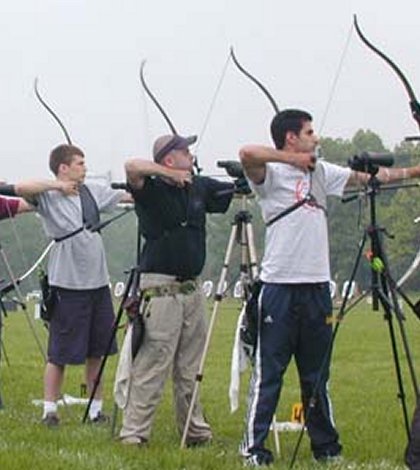Archery exists since ancient times, and over the years the technology involving archery has always evolved. Today, even in the popularity of bows and arrows, a special type of weapon was developed to cover the flaws and weaknesses of traditional archery equipment. This weapon became known as the crossbow. Crossbows are known in some places as “the machine gun of archery” due to its complex features yet almost similar technology as the bow and arrow. The differences among the two types of weapons are its size, and the crossbow is usually more convenient to carry and use.
The projectiles used for a long bow and a crossbow are also different. The long bow’s ammunition is a long arrow while a crossbow has bolts, which are usually shorter. One the main differences between an arrow and a bolt is its flight characteristics. An arrow’s fall depends on the lift gained in flight. Bolts fall at the same rate, not depending on the speed of their flight.
Most modern archery arrows vary in length, but the most common length is 75 centimeters. The primary body element of an arrow is its shaft. Other parts are attached to this. In old times, shafts were often made of wood or bamboo or reeds. Today, shafts are made of aluminum, carbon fiber, or a combination of both. The spine is defined as the stiffness of an arrow shaft. Therefore, an arrow which does not bend much has a greater spine in it. An arrow’s weight is expressed as Grains per Inch, better known as GPI. The weight of the shaft in grains is computed by the length of the arrow (in inches) multiplied by its GPI. Of course this is only the shaft, a complete arrow, with all its main parts attached, will be heavier than the shaft alone.
The primary part of the archery arrow is the arrowhead. Common arrowheads are just the pointed tips of the shaft. But the far more common ones are separate arrowheads which have different designs depending on their purpose. The most common material used to make arrowheads is metal, but in some cases other materials such as horns and are used. The third primary part of an arrow is the fletching. They are found at the back part of the arrow acting as airfoils designed to keep the arrows pointed to the direction where the arrow was targeted. The fourth part of a longbow arrow is the notch. A notch is found at the rearmost end of the arrow. Its purpose is to keep the arrow in place on the string while the bow is drawn. Modern notches are designed to curve around the string to prevent the arrow from slipping off.
The crossbow’s bolts are usually shorter than the longbow’s arrows. Bolts, however, are usually heavier than its longbow counterparts. There is a specific weight for bolts to reach their best kinetic energy depending on the strength and other qualities of the crossbow. Most bolts could pass through certain armors and chain mails. Unlike a longbow arrow, bolts do not need fletching. There are different kinds of longbow heads, but the most common today is a quarrel, distinguished by its four sided points.
Many modern crossbows do not shoot bolts anymore; instead they use arrows like the conventional bow. Crossbow arrows may have the same appearance and construction as the longbow archery arrows, but the length is shorter because of the power stroke.
The primary part of the archery arrow is the arrowhead. Common arrowheads are just the pointed tips of the shaft. But the far more common ones are separate arrowheads which have different designs depending on their purpose. The most common material used to make arrowheads is metal, but in some cases other materials such as horns and are used. The third primary part of an arrow is the fletching. They are found at the back part of the arrow acting as airfoils designed to keep the arrows pointed to the direction where the arrow was targeted. The fourth part of a longbow arrow is the notch. A notch is found at the rearmost end of the arrow. Its purpose is to keep the arrow in place on the string while the bow is drawn. Modern notches are designed to curve around the string to prevent the arrow from slipping off.
The crossbow’s bolts are usually shorter than the longbow’s arrows. Bolts, however, are usually heavier than its longbow counterparts. There is a specific weight for bolts to reach their best kinetic energy depending on the strength and other qualities of the crossbow. Most bolts could pass through certain armors and chain mails. Unlike a longbow arrow, bolts do not need fletching. There are different kinds of longbow heads, but the most common today is a quarrel, distinguished by its four sided points.
Many modern crossbows do not shoot bolts anymore; instead they use arrows like the conventional bow. Crossbow arrows may have the same appearance and construction as the longbow archery arrows, but the length is shorter because of the power stroke.
Tim X Zheng

 Entertainment52 years ago
Entertainment52 years ago
 Entertainment52 years ago
Entertainment52 years ago
 Entertainment52 years ago
Entertainment52 years ago
 Entertainment52 years ago
Entertainment52 years ago











